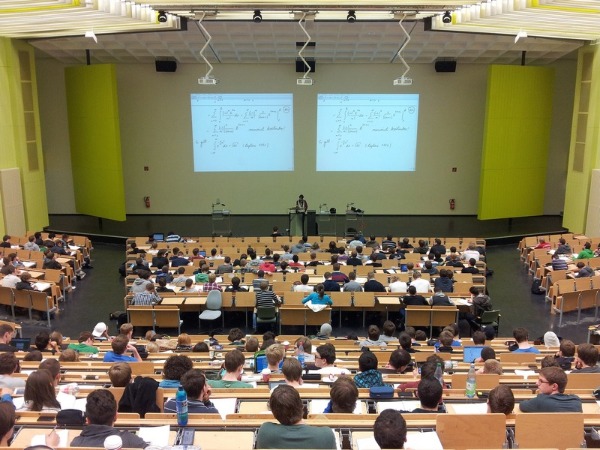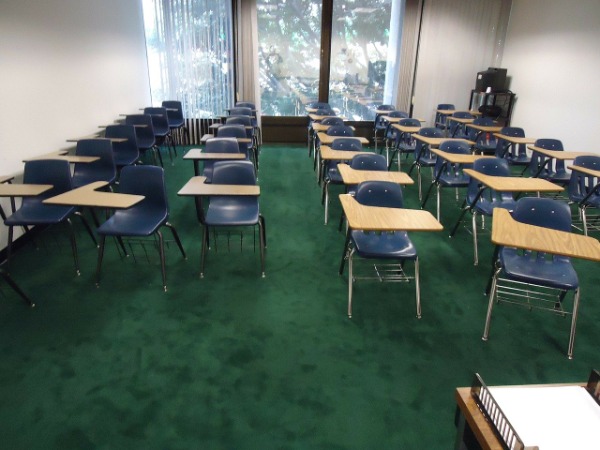Views and Reviews on the Elements of Good (Online) Courses
 The second half of the 2019-2020 school year was abnormal. It's hard to imagine a grade level where teaching and learning will return to what it was a year ago. The most obvious change has been around using online learning. This summer there have been many stories about schools K-20 making plans for this fall. Some of them announced that they will be primarily online. It's a hedge bet that the situation with COVID-19 will be improved and that there will be some classroom face time.
The second half of the 2019-2020 school year was abnormal. It's hard to imagine a grade level where teaching and learning will return to what it was a year ago. The most obvious change has been around using online learning. This summer there have been many stories about schools K-20 making plans for this fall. Some of them announced that they will be primarily online. It's a hedge bet that the situation with COVID-19 will be improved and that there will be some classroom face time.
The three approaches schools have considered are 1) start the fall semester fully online 2) go back to "normal" physical classrooms with social distancing, masks and disinfecting 3) some hybrid of those two approaches.
But schools also need to consider the "reviews" that are being made formally and informally about the online learning that happened in March through June 2020. Those reviews are coming formally by journalists and educators and informally by students and the parents of K-12 students.
K-12 parents have found themselves spending more time working with their children on schoolwork. That might make them appreciate how hard teachers work - or they might decide that online education is a waste of time. When you hear non-educators talk about the qualities of a good online course, they are often talking about the qualities of any good course.
College students' parents don't usually figure into the equation, but now I'm hearing parents say that they are reluctant to have their child go into a classroom and unwilling to pay $25-50,000 for an online curriculum. When parents are paying for school directly (rather than through taxes), they are more likely to feel they should have some control on how their money is being used.
Those qualities mentioned include:
- The course is engaging and challenging.
- It invites students to participate, motivates them to contribute and captures their interest and attention.
- Open educational resources are prioritized over expensive textbooks
- It is interactive - teacher to students and also student to student.
- It is not just an information dump, but it does provide meaningful readings, lecture videos, and resources.
- Students receive personalized feedback, support and guidance.
- Students feel they are part of a learning community.
- It involves students in “doing” — not just watching, reading and writing papers.
- And finally, this high-level combination of qualities - a course is informed by issues of equity and justice and takes into account social, political and cultural issues, including students’ backgrounds and socioeconomic circumstances.
Looking at that list nothing jumps out as being ONLINE. If you do break out the responses teachers, students and parents gave that are online-specific, they fall under two categories: the availability of the technology; the preparation to use the technology.
The Chronicle did an article titled "In Their Own Words: Here’s What Professors, Chairs, and Deans Learned From Remote Courses This Spring." They looked for words that were most often used in the responses to their survey. One keyword they found in their responses was "flexible." Here are 3 of those responses:
“Be extremely flexible. Don’t expect complete guidance from the administrators; make your best guess as to what is going to be. Most importantly: By adopting many online-learning concepts and best practices in advance, I was prepared to go online at a moment’s notice. This helped immensely.
“Flexibility was key in the transition. I chose to be more lenient with students than I am in a traditional classroom. If we stay online I will once again become more rigid, but I feel this semester was exceptional for everyone, and it was critical to be understanding.”
“You have to be willing to learn to teach virtually and have compassion and empathy with your students. Learn to be flexible and challenge your teaching skills. Covid-19 has changed how we will teach in the future.”
They also found - unsurprisingly - that faculty need a lot more support to teach online than expected.
“Many faculty have resisted true development in pedagogy, but that’s unavoidable now.”
“As a faculty, we should have been more proficient in distance education before the move to online. This was a wake-up call for all of our faculty that we did not make this a priority.”
“Some faculty were really unprepared to work with technology."
“I was very impressed that our faculty who already teach online were willing to step up and help their colleagues who were unfamiliar with this modality.”

 An article in The Chronicle of Higher Education (unfortunately, "premium" for subscribers even in these pandemic days) is called
An article in The Chronicle of Higher Education (unfortunately, "premium" for subscribers even in these pandemic days) is called